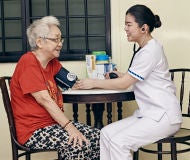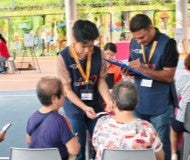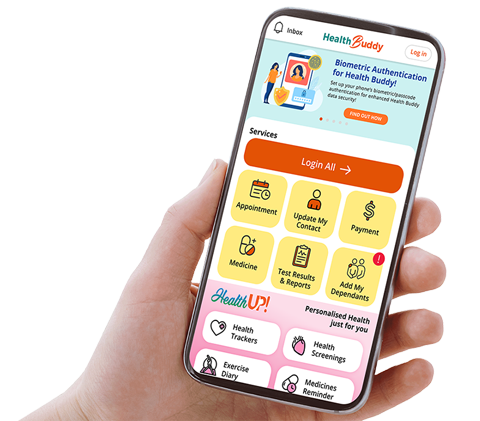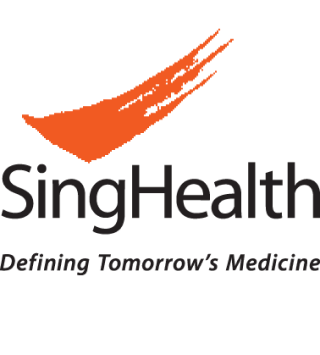What is - Eating Disorder
Eating disorders are mental health conditions that involve abnormal thoughts, behaviours or habits surrounding eating. The most common types of eating disorders include Anorexia Nervosa, Bulimia Nervosa, and Binge-Eating Disorder.
Symptoms of Eating Disorder
- Intense fear of gaining weight
- Distorted body image
- Eating restrictively or starving self intentionally
- May use additional techniques to control weight (i.e. excessive exercise or abuse of laxatives, enemas, or diuretics)
- Tend to engage in behaviours that seem abnormal or compulsive to others (e.g. weighing self every day, calorie counting, avoiding meals or multiple types of food, checking the mirror frequently, weighing and portioning foods carefully, etc.)
- Tend to have significantly low body weight in relation to height or developmental stage
- Intense fear of gaining weight
- Distorted body image
- Engage in repeated episodes of binge-eating (i.e. eating large amounts of food in limited time until uncomfortably full) and compensating via purging (i.e. vomiting), excessive exercising, or abusing laxatives, enemas, or diuretics
- Tend to be within normal weight range in relation to height or developmental stage
- Tend to experience out-of-control eating but not engage in compensatory behaviours
- Tend to be overweight as a result of eating habits
- May develop metabolic complications such as diabetes, hyperlipidaemia, obesity, and hypertension over time
Eating Disorder - Causes and Risk Factors
Eating disorders are complex conditions that can arise from a range of behavioral, interpersonal, emotional, psychological, and social factors.
- Low self-esteem
- Feelings of inadequacy or lack of control in life
- Depression, anxiety, anger, or loneliness
- Troubled family and personal relationships
- Difficulty expressing emotions and feelings
- History of being teased or ridiculed based on size or weight
- History of physical or sexual abuse
- Cultural norms that value people based on their physical appearance
- Cultural values that glorify thinness and obtaining the perfect body
- Narrow definitions of beauty based on specific body weights and shapes
- Influence of media on standards of beauty
- Possible biochemical or biological factors (e.g. imbalance of chemicals in the brain that control hunger, appetite, and digestion)
- Genetic factors (i.e. family history of eating disorders)
Treatment for Eating Disorder
Building a Positive Body Image and Healthy Self-Esteem
- Appreciate all that your body can do and celebrate it
- Keep a top 10 list of things you like about yourself (not linked to your weight or what you look like) and read it often
- Remind yourself that ‘true beauty’ is not just about how you look physically
- Look at yourself as a whole person, instead of focusing on specific body parts
- Surround yourself with positive and supportive people
- Shut down internal voices that shame you or your appearance
- Wear clothes that are comfortable and that make you feel good about your body
- View social and media messages with a critical eye and pay attention to how they make you feel about yourself
- Do something nice for yourself – take a relaxing bath, make time for a nap, or find a peaceful place to relax
- Use the time and energy that you might have spent worrying about food, calories, and your weight to do something to help others
Building Resilience
- Maintain good relationships with close family members and friends, and help others
- Avoid seeing crises as insurmountable problems
- Accept that change is part of living
- Set realistic goals, break them down into small achievable goals, and move toward your goals gradually
- Take decisive actions instead of avoiding problems
- Look for opportunities for self-discovery (e.g. think about specific ways you have grown from dealing with a difficult situation)
- Nurture a positive view of yourself, and develop confidence in your ability to solve problems
- Keep things in perspective – think long-term and avoid blowing things out of proportion
- Maintain a hopeful outlook – visualize what you want instead of worrying about what you fear
- Take care of your needs, your feelings, and your body
How Are Eating Disorders Treated at SGH?
- The team utilizes evidence-based treatment that is safe, effective, and scientifically proven. Treatment is individualized to the patient’s specific needs and recovery process. Treatment is intended to:
- Help patients achieve a healthy and stable body weight;
- Normalise the patient’s eating behaviors;
- Work through conflicts and issues underlying and maintaining the eating disorders;
- Assist the family in providing adequate support to the patient for recovery; and
- Offer structured aftercare and prevent relapse.
Outpatient Treatment
- Consultations with a designated psychiatrist for regular consultation and monitoring of the patient’s condition
- Psychotherapy (for patients aged above 18)
- Nutritional Therapy
- Family Therapy
- Family-based Therapy (for patients aged 18 and below)
- Occupational Therapy
- Art Therapy
- Physiotherapy
- Clinical counselling & case management
Inpatient Treatment
- Medically compromised as a result of extremely low body weight and/or symptoms of the eating disorders;
- Psychologically unstable (e.g. suicidal or intensely resistant to treatment); or
- Unable to cope with the eating disorder symptoms and/or are not responding to treatment as an outpatient
For more detailed information on SGH's Eating Disorders Programme and treatment approach, you can refer to this booklet: https://www.sgh.com.sg/patient-care/specialties-services/Eating-Disorders-Programme/Documents/Treating_Eating_Disorder.pdf.
Eating Disorder - Other Information
Impacts of Eating Disorders
Eating disorders can have serious physical, psychological and social consequences on the individual. The following are just some of the impacts that eating disorders tend to have on individuals with eating disorders:
- Permanent loss of bone mass
- Delayed or permanently stunted growth
- Weakened immune system
- Fainting spells
- Disruption of menstrual cycle or infertility
- Damage to kidneys or liver
- Inability to concentrate or think clearly
- Irregular heartbeat or cardiac arrest
- Death
- Mood disorders (depression, anxiety)
- Obsessive thoughts and preoccupations
- Compulsive behaviors
- Fear of being out-of-control
- Feelings of isolation and alienation
- Tensions within family, especially due to arguments about meals and eating behaviors
- Damaged or destroyed friendships or romantic relationships
- Reduced ability to perform or cope well in school or work
Frequently Asked Questions about Eating Disorders
- Eating Disorder Hope (https://www.eatingdisorderhope.com)
- Help Your Teenager Beat an Eating Disorder (2nd Edition) (2015) by James Lock and Daniel Le Grange (Publisher: The Guildford Press)
Beating Your Eating Disorder: A Cognitive-Behavioral Self-Help Guide for Adult Sufferers and Their Carers (1st Edition) (2010) by Glenn Waller et al., (Publisher: Cambridge University Press)
The Intuitive Eating Workbook: Ten Principles for Nourishing a Healthy Relationship with Food (Illustrated Edition) (2017) by Evelyn Tribole and Elyse Resch (Publisher: New Harbinger)
For further reading, please download a copy of our leaflet:  Eating Disorder.pdf
Eating Disorder.pdf
Contributed by
The information provided is not intended as medical advice. Terms of use. Information provided by SingHealth.
Condition Treated At
Department
Psychiatry
Department
Physiotherapy
Department
Dietetics
Department
Eating Disorder Programme
Get to know our doctors at SingHealth Hospitals in Singapore.
Get to know our doctors at SingHealth Hospitals in Singapore. here.




















